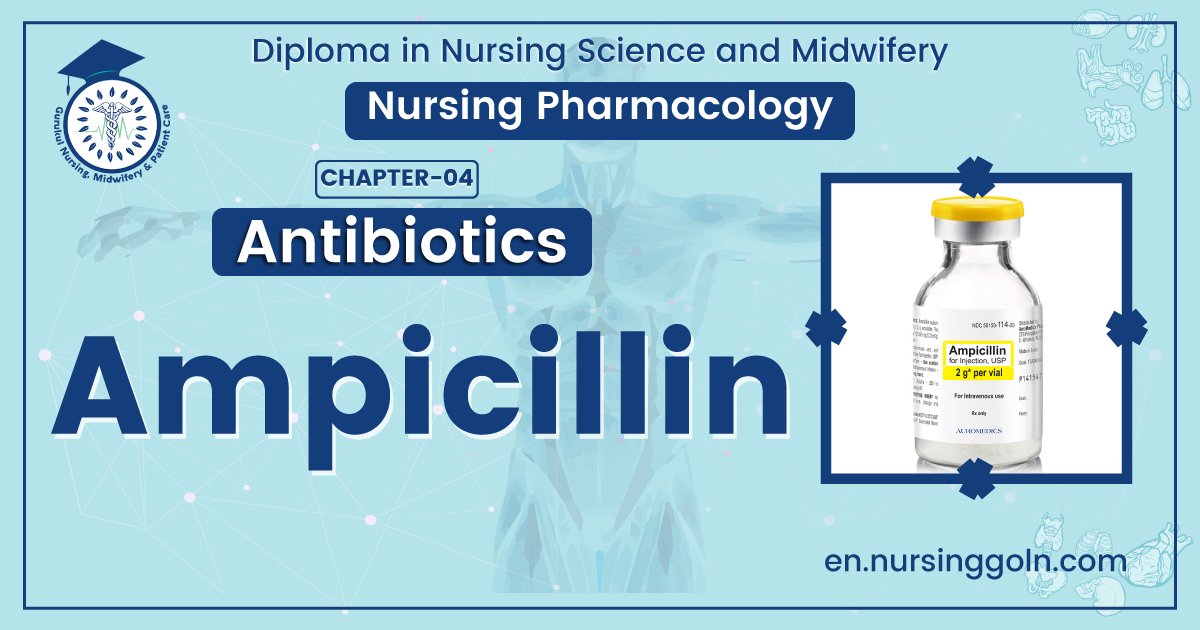Concept of Ampicillin – This book covers the entire syllabus of “Pharmacology” prescribed by BNMC- for a diploma in nursing science & midwifery students. We tried to accommodate the latest information and topics. This book is an examination set up according to the teachers’ lectures and examination questions.
At the end of the book, previous questions are given. We hope in touch with the book students’ knowledge will be upgraded and flourish. The unique way of presentation may make your reading of the book a pleasurable experience.

Concept of Ampicillin
It is active against all organisms sensitive to PnG. In addition, many gram-negative bacilli, e.g. H. influenzae, E. coli, Proteus, Salmonella Shigella and Helicobacter pylori are inhibited.
➤ Ampicillin is not degraded by gastric acid.
➤ Oral absorption is incomplete but adequate.
➤ Food interferes with absorption.
➤ It is partly excreted in bile and reabsorbed enterohepatic circulation occurs.
Dose: 0.5-2 g oral/i.m./i.v. depending on severity of infection, every 6 hours; children 50-100 mg/kg/day.

Uses
1. Urinary tract infections
2. Respiratory tract infections: including bronchitis, sinusitis, otitis media, etc.
3. Meningitis
4. Gonorrhoea: It is one of the first line drugs for oral treatment of nonpenicillinase producing gonococcal infections.
5. Typhoid fever:
6. Cholecystitis: Ampicillin is a good drug because high concentrations are attained in bile.
7. Subacute bacterial endocarditis: Ampicillin 2 g i.v. 6 hourly is used in place of PnG. Concurrent gentamicin is advocated.
8. H. pylori:
9. Septicaemias and mixed infections: Injected ampicillin may be combined with gentamicin or one of the third generation cephalosporins.

Adverse effects of ampicillin
➤ Skin rash either urticarial or erythematous. Occasionally diarrhoea, nausea and vomiting.
Contraindication of Ampicillin
➤ H/O an allergy reaction to any of Penicillin.
Amoxycillin
Properties
➤ Oral absorption is better
➤ Food does not interfere with absorption.
➤ Higher and more sustained blood levels are produced.
➤Incidence of diarrhoea is lower.
It is less active against Shigella and H. influenzae.co
Indications
➤ Respiratory tract infections.
➤ Ear, nose and throat infections.
➤ Urinary tract infection
➤ Biliary tract infection
➤ Soft tissue and skin infections
➤ Gonorrhoea and
➤ Prophylaxis of bacterial endocarditis.
Contraindications: Penicillin sensitive patients.
Adverse effects: Allergic mani festations, diarrhoea
Read more:
